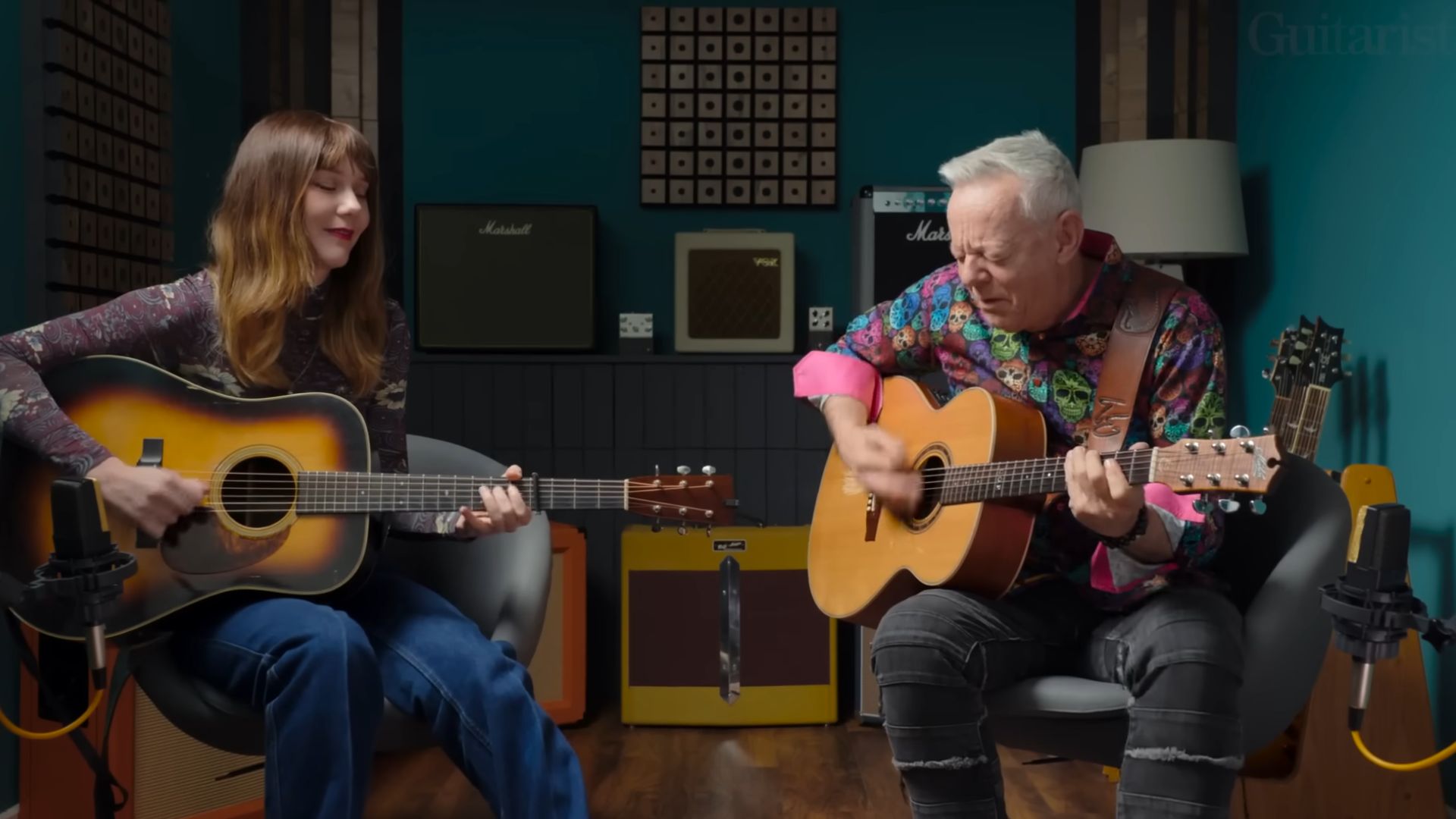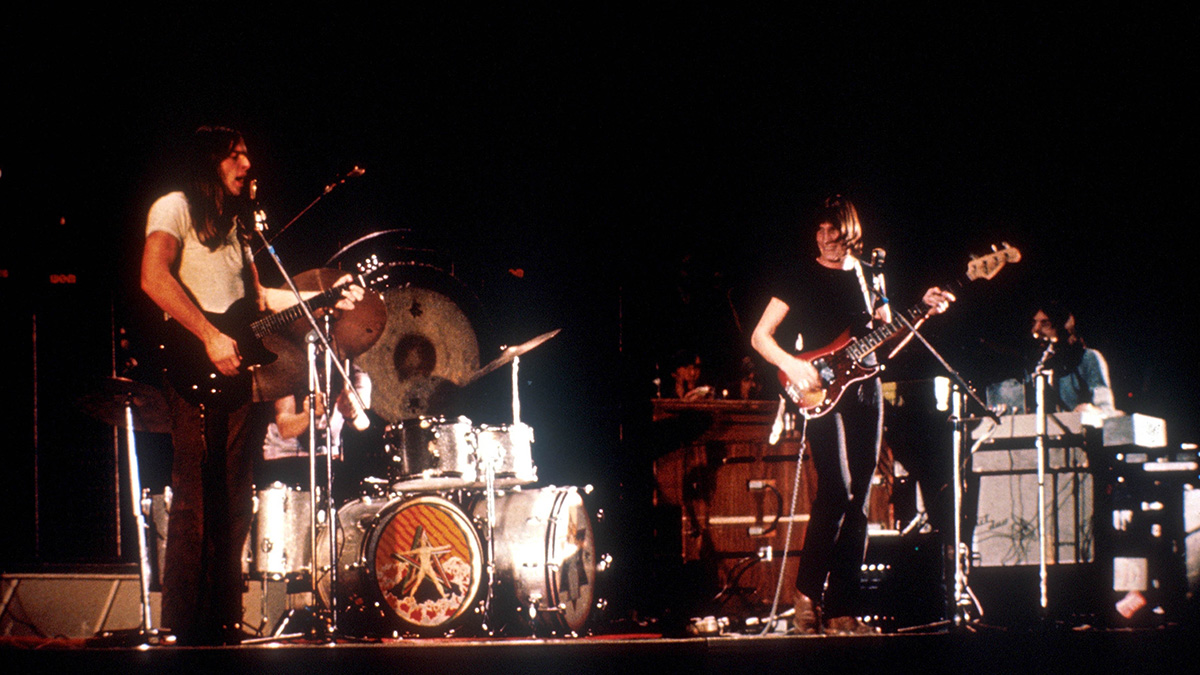“It’s a beautiful floating technique”: Watch Molly Tuttle and Tommy Emmanuel share the secrets of their right-hand technique and banjo-inspired rhythms in this acoustic guitar video masterclass
Two of the world's greatest acoustic guitar players talk shop, jam together, and tell us how open strings can be our best friend when playing improvised bluegrass

Guitarist recently sat down with two of the world's best acoustic players in Molly Tuttle and Tommy Emmanuel to learn more about their approach to right-hand technique, open strings, and tuning choices.
The rapport between the pair is palpable as they share their top tips in a must-see interview for acoustic guitar lovers.
Regardless of playing style, right-hand technique is often criminally overlooked when it comes to refining your playing. For Tuttle, fluidity is paramount.
“I use a flat pick, gripping it between my index and thumb, and I usually play on the back end of the soundhole,” she says. “When I strum, I float my hand so that no part touches the strings or the guitar. But when I switch to lead, I flatten out my wrist and anchor it on the bridge, so you'll see some fluidity in my playing when switching between parts.”
In the interview, she clearly shows the positional switch. For lead, you see that her hand pulls closer to the bridge so that it gently brushes against the bridge pins, anchoring her hand without completely locking it down onto the body of the guitar.
“It's a beautiful floating technique that Molly has,” says Emmanuel. “The hardest part of acoustic guitar is getting that effortless approach. Making it nice and relaxed is a good idea.”
With that in mind, Tuttle recommends players adopt a loose grip of the guitar pick. “You want to almost feel like you're about to drop your pick, you're not gripping onto it,” she says. “Just don’t actually drop it like I’ve done before. It’s embarrassing!”
Get The Pick Newsletter
All the latest guitar news, interviews, lessons, reviews, deals and more, direct to your inbox!
Another top tip from Tuttle comes from her Shakespearean-like thinking of ‘to capo, or not to capo’.
“When I'm playing with another guitarist, I like to play in a different position [to them],” she says. “If they're not putting on a capo, I will. That way, we're not stepping on each other's toes too much.”
The conversation also discusses the value of and reasoning for a heavy reliance on open strings in bluegrass. Both draw sonic parallels with the banjo.
“A lot of it comes from the banjo sound and, [as a result], I'm always looking for ways to use open strings against each other so it sounds a little sweeter or unusual,” Emmanuel explains. “Jerry Reed brought that to our attention. Tony Rice added so much of that into the records he was making, too. It's a beautiful sound.”
“For me, a lot of it for me comes from wanting the notes to sound fluid,” adds Tuttle. “So, with open strings, you can have notes ringing out over each other which can be really pretty, or you're cross-picking so it almost sounds like a banjo. It took me years to venture up the neck and play in closed positions! Throwing in an open string can give you time to reposition your hand too, which gives the impression of playing faster.”
The pair were also quizzed on their tuning preferences, with Tuttle explaining why she alternates between standard and Open Gsus4.
“I was inspired to play [banjo technique] clawhammer style on the guitar in Open Gsus4 after someone showed me I could take the same right-hand technique and incorporate it on the guitar,” Tuttle says. “You don't use a pick and you want an open tuning for those ringing notes, and you're hitting the higher strings with index and middle finger nails and plucking the lower strings with the thumb.”
“The first song I ever learned on clawhammer guitar was Little Sadie,” adds Tuttle, “which uses a common rhythm called a ‘bum ditty’ pattern.”
For this rhythm, you'll want to play the higher strings with your index and middle fingernails, playing 'bum' and 'di-', with your thumb playing a bass note to round the phrase off with a '-tty'.
The equivalent with a pick would be 'down, down up’. You can hear the pair play the song from 17:40. For a Tuttle-written song using this rhythm, check out Take the Journey (above).
“Open G also works really well for modal songs in between major and minor, because it’s all Gs and Ds apart from a weird C on the second string – you actually tune that up [from B].”
A post shared by Molly Tuttle (@mollytuttle)
A photo posted by on
It’s not been a bad start to the year for Molly Tuttle, with City of Gold picking up the Grammy for Best Bluegrass Album.
The interview follows Emmanuel's sit down with Guitarist back in October to discuss his approach to thumbpicking.
"When you practice the skills enough, one day, just like magic, the skills turn into music," he said, before advising us all to "leave the fingers out entirely”.
Emmanuel went on to explain how he developed this fingerless mindset when teaching guitar in Australia. He would tell students to rest their fingers on the guitar top, then he would tape their fingers down so they couldn’t move. “They’re rebellious digits,” he said. “They always want to join in.”
A freelance writer with a penchant for music that gets weird, Phil is a regular contributor to Prog, Guitar World, and Total Guitar magazines and is especially keen on shining a light on unknown artists. Outside of the journalism realm, you can find him writing angular riffs in progressive metal band, Prognosis, in which he slings an 8-string Strandberg Boden Original, churning that low string through a variety of tunings. He's also a published author and is currently penning his debut novel which chucks fantasy, mythology and humanity into a great big melting pot.
“I heard the Money solo and thought, ‘This is amazing!’ So I sent David a telegram saying, ‘Remember me? I'm in a band now called Roxy Music’”: Phil Manzanera on his friendship with David Gilmour, and the key to the Pink Floyd man's unmistakable tone
“It’s really quite genius, but also hard to learn – it sounds insane, but sometimes the easiest songs still get me nervous”: Kiki Wong reveals the Smashing Pumpkins song she had the most trouble with













